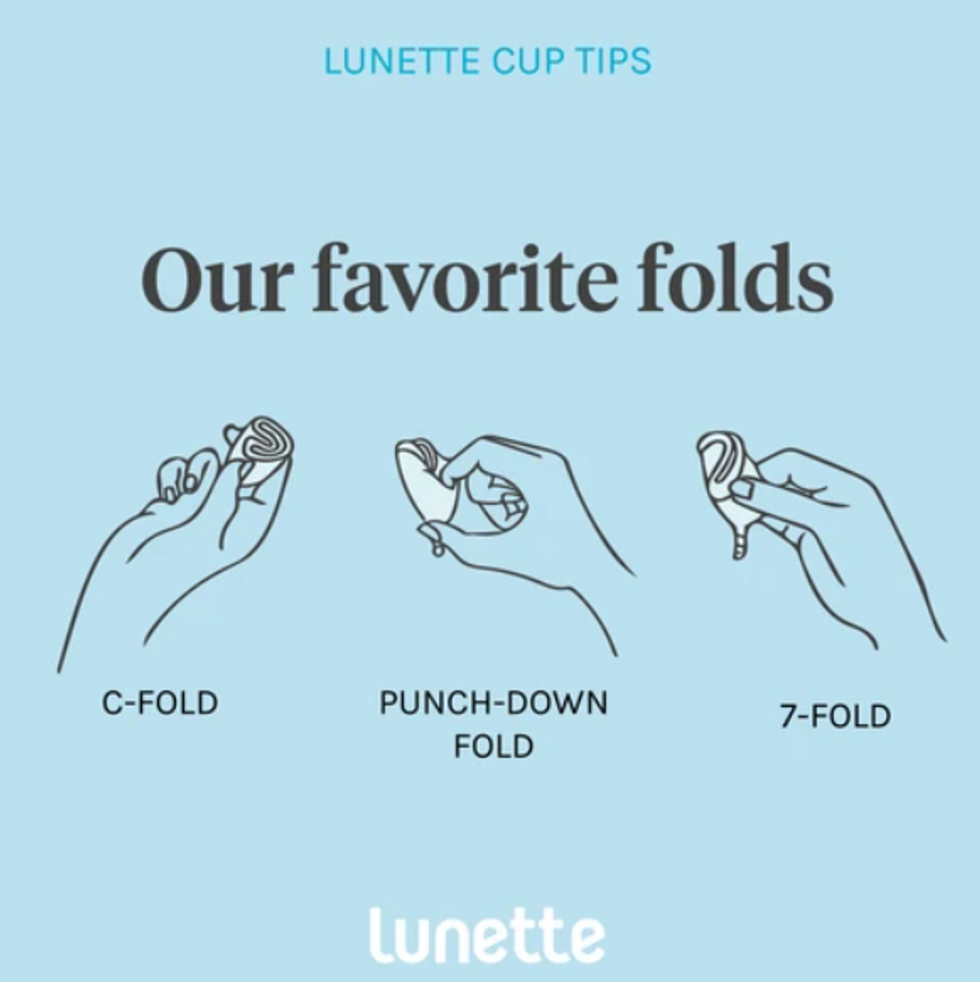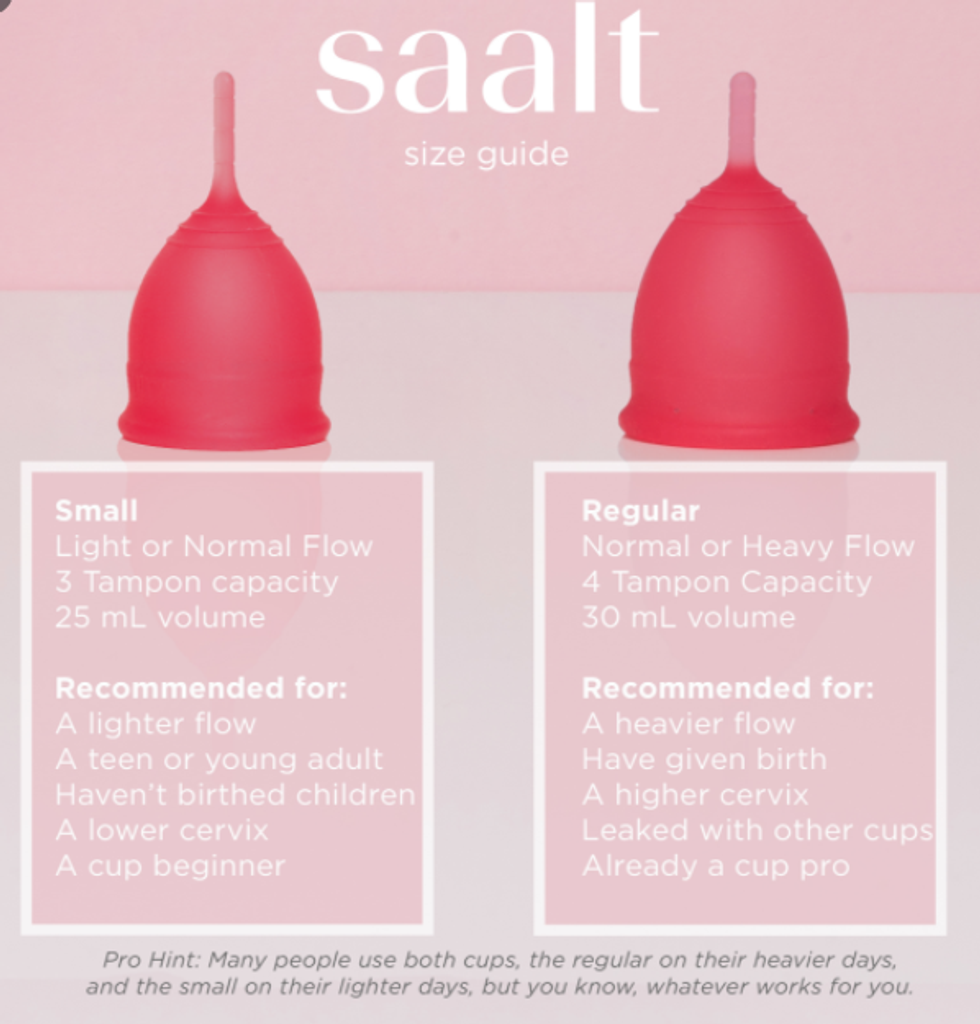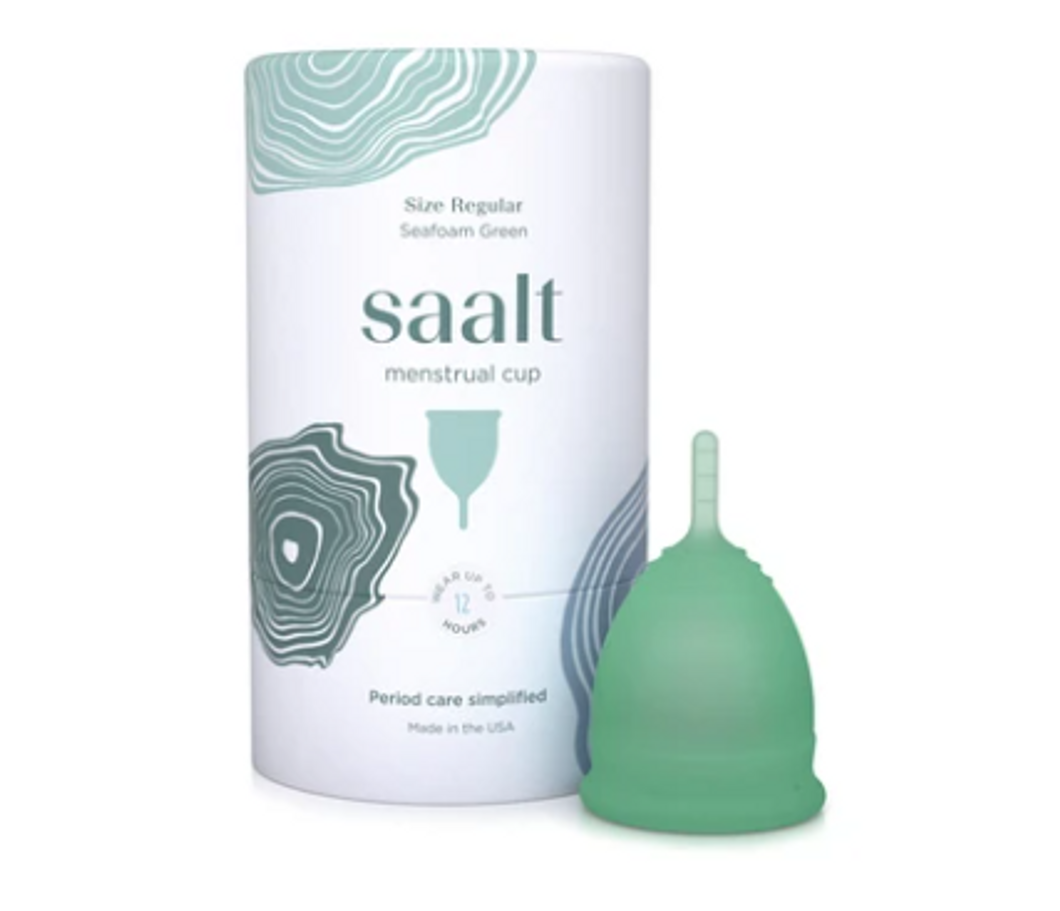- You may be feeling hesitant to try these out because they seemed way too big to not be uncomfortable, but when you get the hang of inserting it properly, you can forget that it is even there; it is actually only about as big as a tampon when it has absorbed the max amount of blood that it can.
- Not only does using a menstrual cup create less waste, many companies that produce them make an effort have an impactful effect on the environment and communities in various ways.
- They are very reliable so that you do not have as many 'bleed throughs' that ruin your underwear, pants, and mood; I no longer rush to the bathroom every time I laugh too hard or sneeze.
These may seem like a strange new alternative to other menstrual products, but they have actually been around since the 1930s!
Menstrual cups were not popularized until more recently, and I suspect it is because talking about menstrual health has become much 'more accepted' and casual since people with uterus' have been more encouraged to talk about, and be 'less ashamed,' about what they experience for a long period of time (no pun intended) of their lives.
When I first got hired as a swim instructor, I stressed over what I could do given my period was unavoidable. Fortunately, I was comfortable enough to talk to my sister who was working in women's health clinic at the time, and she was eager to recommend this to me. I had been considering using them for a while at that point, so this was the push I needed. Since the menstrual cups creates a 'seal' to your cervix, it won't just leak; I was no longer concerned that it would look like a shark attack out of nowhere while teaching kids how to swim once I figured out how to properly insert it so it would seal.
I do have to say there was definitely a learning curve when I first started using it. I was convinced that my uterus was tilted or that I had too heavy of a cycle to use it and almost gave up on it because I was still bleeding through my pants. I gave myself a few more days to use it to see if I would get any different results and finally figured out how to 'seal' and that you have to make sure you feel a "suction;" this gets way easier and you'll just be able to know when it's properly inserted. I promise it gets easier the more you use it just like how it probably took you a little bit to get used to using tampons.

It is extremely likely that the reason I was still bleeding through when I first started using one was because I wasn't inserting it properly.
Fortunately, even if do have a tilted uterus, you can still use a menstrual cup!
It can be pretty uncomfortable getting used to inserting it, but there are different ways you can do it. On the diagram bellow, you can see 3 different ways to do so.

While it does work and is reliable, you're going to have to make sure to take out and rinse it in the recommended time that can vary brand to brand; when you do rinse it out, make sure that the holes around the rim are all cleared so that the suction will be A-OK. The first few days of my cycle are pretty heavy so I have to make sure to do that in that time span because, unfortunately, it can overflow. This is one of my biggest complaints, but it's a user error and I can't blame anyone but myself for that.
When you go to buy one, make sure to pay attention to what size is recommended and how heavy of a cycle they are meant for. You can get ones for light, medium and heavy cycles as well as different sizes that would be the best fit for you.
I'm not going to lie, it's not the greatest when you're in a public bathroom and need to rinse it out because you have to have the awkward walk from the stall to the sink with a bloody cup in your hand while also trying not to bleed out, so I 100% recommend making sure to just change it while you're at home before going out or finding a bathroom in public that only has the single sink and toilet in there. Otherwise, I don't really have any complaints.

People with uterus' spend approximately $2,000 on tampons in their lives, and pads can add up to nearly $500 in a lifetime; a menstrual cup on the other hand costs anywhere from $20-$40, and you only have to replace them every 1-2 years. The cups from the brand I use, Saalt, can actually up to 10 years; this replaces over 3,000 tampons and covers 120 periods! According to CNN Health, you can save up to 95% of what you would be paying for tampons.
This product is not only more reliable than tampons, but it is also much better for the environment! They take less water to produce than tampons and pads, are made of more environmentally friendly materials, are reusable, and produce much less waste.
"[The] plastic from tampons and pads can take anywhere from 500 to 800 years to decompose... but with a Lunette Menstrual Cup, you'll get a zero-waste, chemical, latex and BPA-free period."
Not only are they eco-friendly, but many companies who make menstrual cups make an effort to give back to the community in various ways. Saalt "[commits] 2% of [their] revenue to donate period care to regions with the most need, and help fund initiatives in menstrual health, education, and sustainability," and I have seen tons of advertisements on various social medias that advertise they also donate a significant amount of their proceeds to charities.
If you have periods and are trying to be more conscious of your impact on the environment in little do-able ways, buying a menstrual cup will save you hundreds of dollars, have a great impact on the community, and will minimize your waste! I absolutely recommend this and suggest that you should also recommend it your friends and family members -- if not this brand, the product in general; let's continue to help break the stigma surrounding menstrual health and hygiene!




































